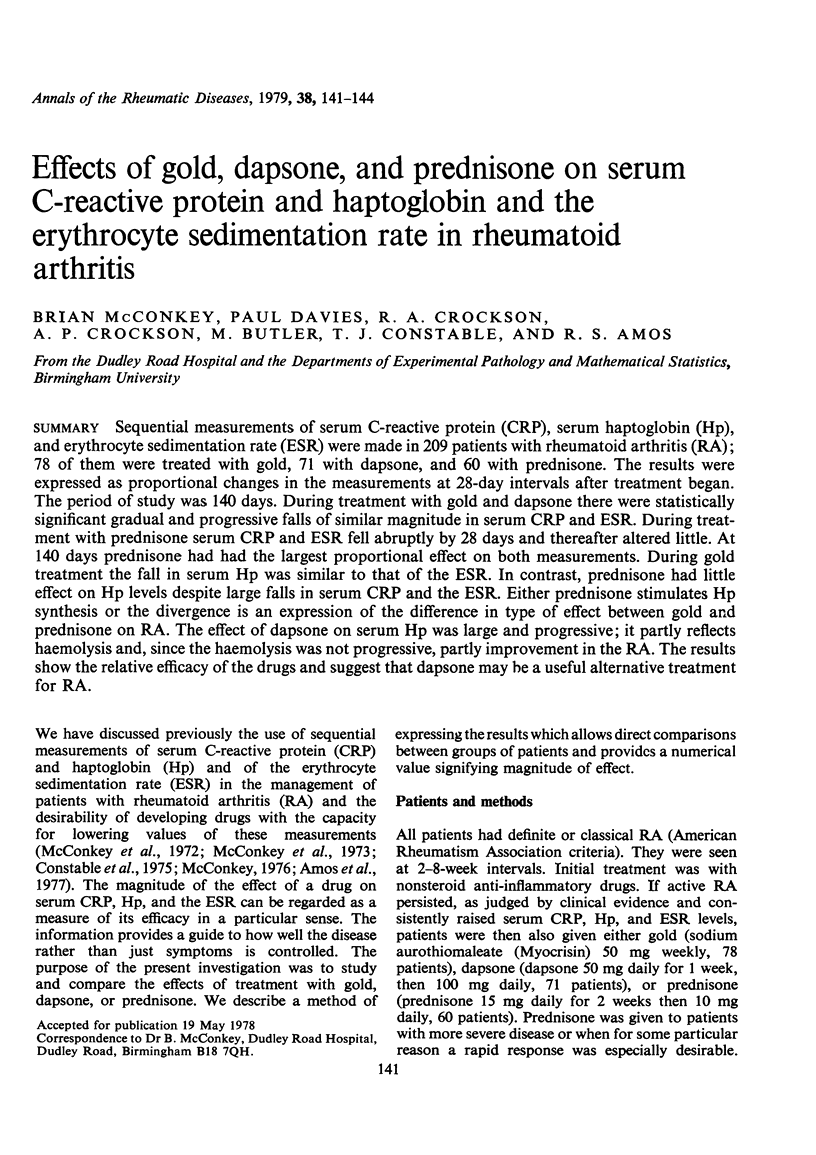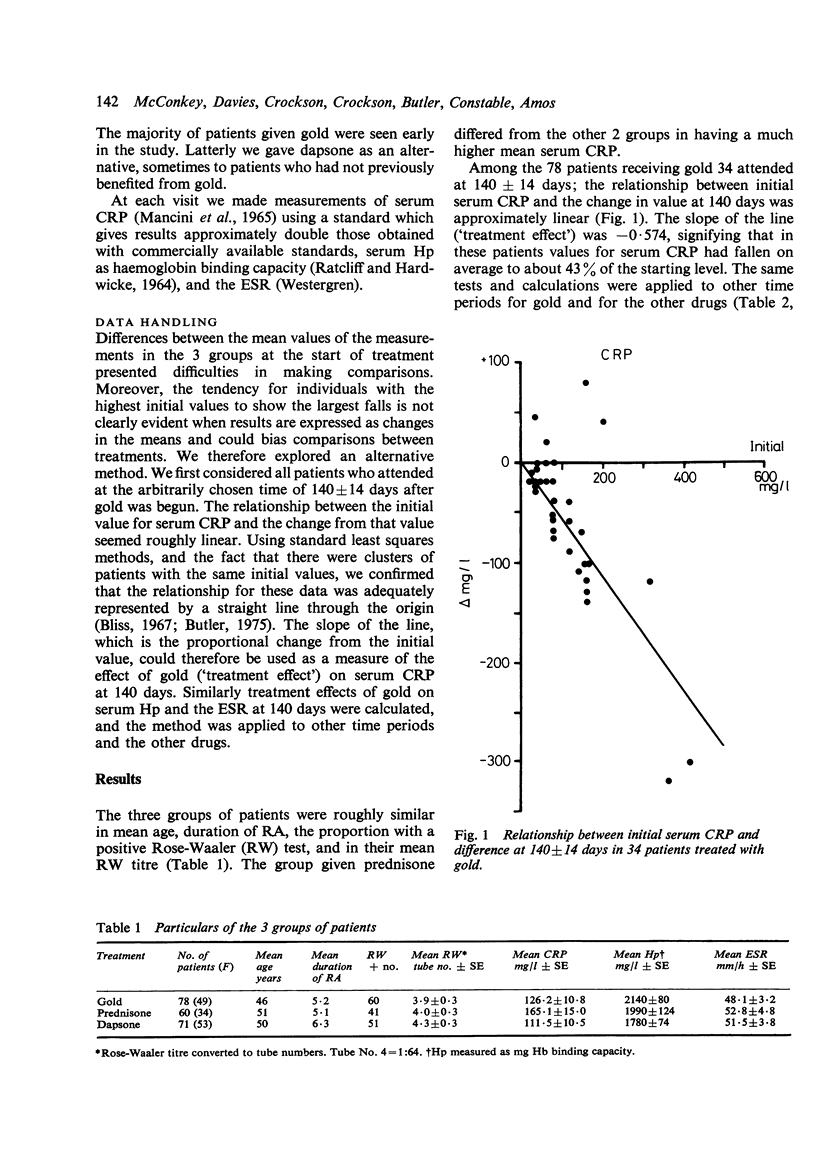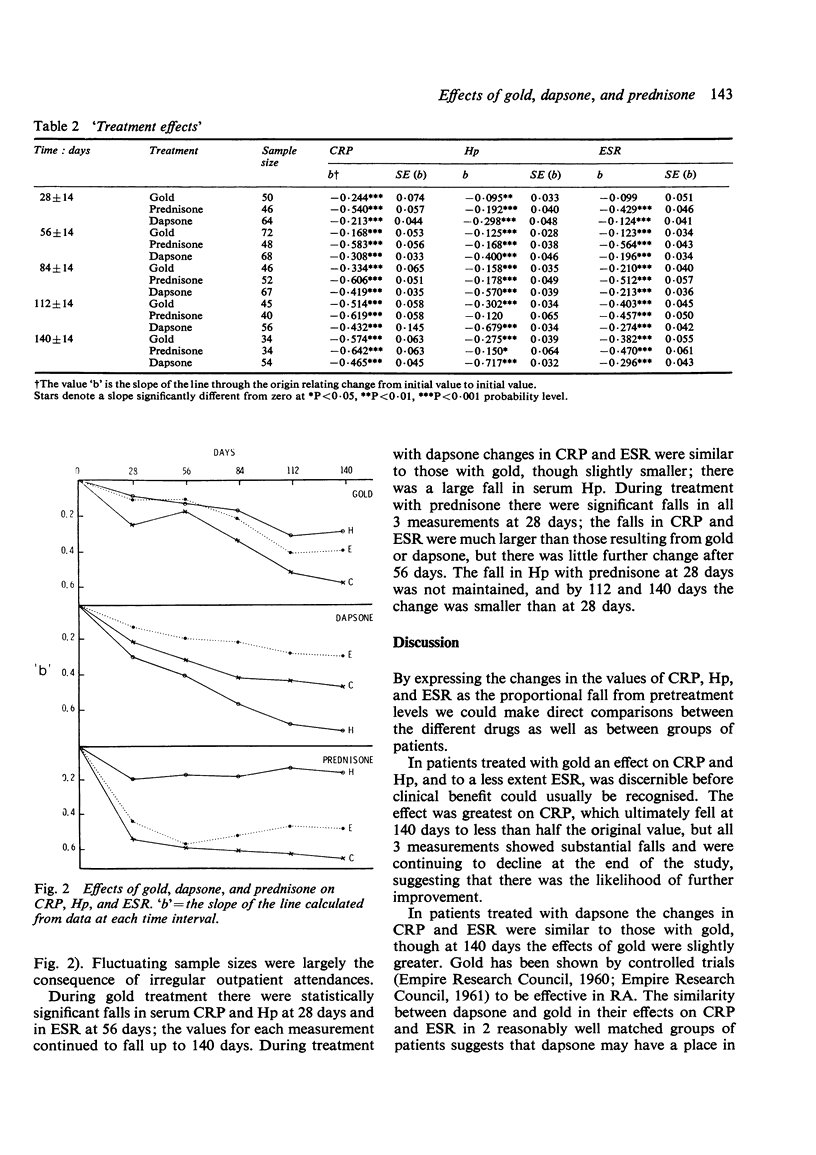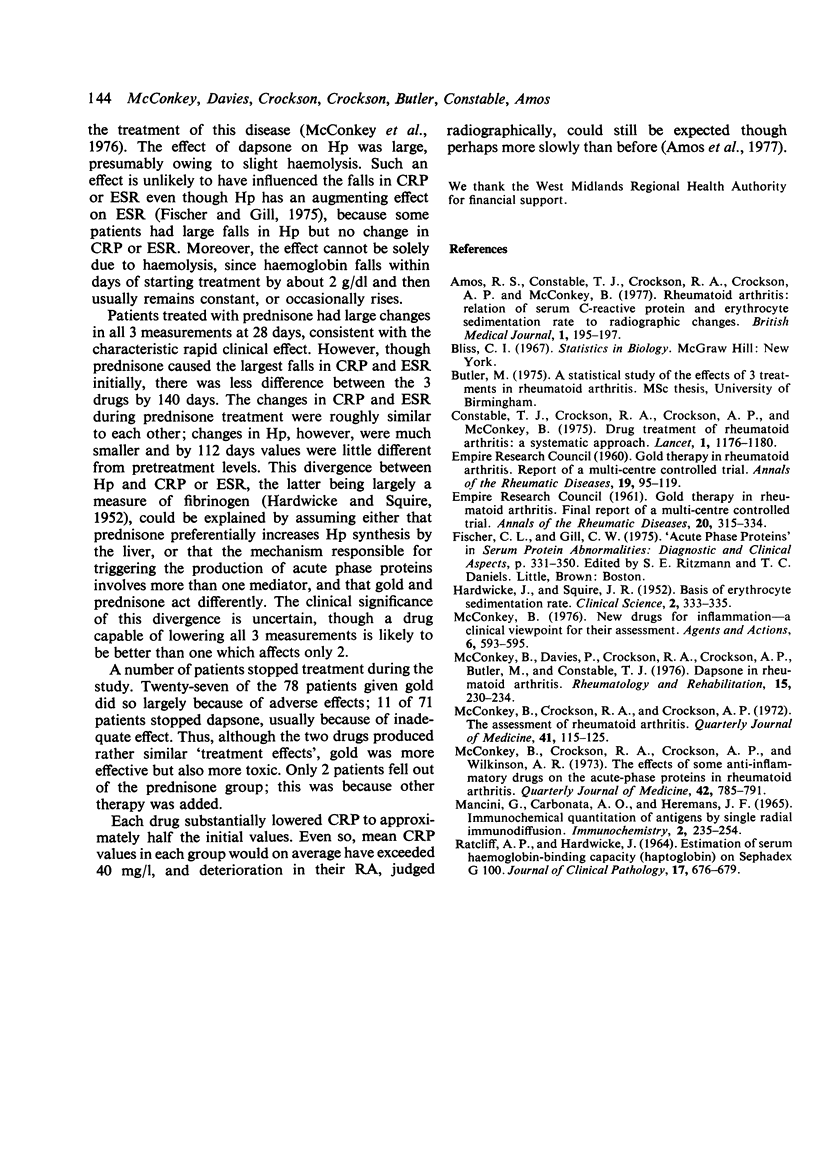Abstract
Sequential measurements of serum C-reactive protein (CRP), serum haptoglobin (Hp), and erythrocyte sedimentation rate (ESR) were made in 209 patients with rheumatoid arthritis (RA); 78 of them were treated with gold, 71 with dapsone, and 60 with prednisone. The results were expressed as proportional changes in the measurements at 28-day intervals after treatment began. The period of study was 140 days. During treatment with gold and dapsone there were statistically significant gradual and progressive falls of similar magnitude in serum CRP and ESR. During treatment with prednisone serum CRP and ESR fell abruptly by 28 days and thereafter altered little. At 140 days prednisone had had the largest proportional effect on both measurements. During gold treatment the fall in serum Hp was similar to that of the ESR. In contrast, prednisone had little effect on Hp levels despite large falls in serum CRP and the ESR. Either prednisone stimulates Hp synthesis or the divergence is an expression of the difference in type of effect between gold and prednisone on RA. The effect of dapsone on serum Hp was large and progressive; it partly reflects haemolysis and, since the haemolysis was not progressive, partly improvement in the RA. The results show the relative efficacy of the drugs and suggest that dapsone may be a useful alternative treatment for RA.
Full text
PDF



Selected References
These references are in PubMed. This may not be the complete list of references from this article.
- Amos R. S., Constable T. J., Crockson R. A., Crockson A. P., McConkey B. Rheumatoid arthritis: relation of serum C-reactive protein and erythrocyte sedimentation rates to radiographic changes. Br Med J. 1977 Jan 22;1(6055):195–197. doi: 10.1136/bmj.1.6055.195. [DOI] [PMC free article] [PubMed] [Google Scholar]
- Constable T. J., Crockson R. A., Crockson A. P., McConkey B. Drug treatment of rheumatoid arthritis. A systematic approach. Lancet. 1975 May 24;1(7917):1176–1180. doi: 10.1016/s0140-6736(75)93150-5. [DOI] [PubMed] [Google Scholar]
- HARDWICKE J., SQUIRE J. R. The basis of the erythrocyte sedimentation rate. Clin Sci. 1952 Nov;11(4):333–355. [PubMed] [Google Scholar]
- Mancini G., Carbonara A. O., Heremans J. F. Immunochemical quantitation of antigens by single radial immunodiffusion. Immunochemistry. 1965 Sep;2(3):235–254. doi: 10.1016/0019-2791(65)90004-2. [DOI] [PubMed] [Google Scholar]
- McConkey B., Crockson R. A., Crockson A. P. The assessment of rheumatoid arthritis. A study based on measurements of the serum acute-phase reactants. Q J Med. 1972 Apr;41(162):115–125. [PubMed] [Google Scholar]
- McConkey B., Crockson R. A., Crockson A. P., Wilkinson A. R. The effects of some anti-inflammatory drugs on the acute-phase proteins in rheumatoid arthritis. Q J Med. 1973 Oct;42(168):785–791. [PubMed] [Google Scholar]
- McConkey B., Davies P., Crockson R. A., Crockson A. P., Butler M., Constable T. J. Dapsone in rheumatoid arthritis. Rheumatol Rehabil. 1976 Aug;15(3):230–234. doi: 10.1093/rheumatology/15.3.230. [DOI] [PubMed] [Google Scholar]
- McConkey B. New drugs for inflammation - a clinical viewpoint for their assessment. Agents Actions. 1976 Sep;6(5):593–595. doi: 10.1007/BF01971575. [DOI] [PubMed] [Google Scholar]
- RATCLIFF A. P., HARDWICKE J. ESTIMATION OF SERUM HAEMOGLOBIN-BINDING CAPACITY (HAPTOGLOBIN) ON SEPHADEX G.100. J Clin Pathol. 1964 Nov;17:676–679. doi: 10.1136/jcp.17.6.676. [DOI] [PMC free article] [PubMed] [Google Scholar]


